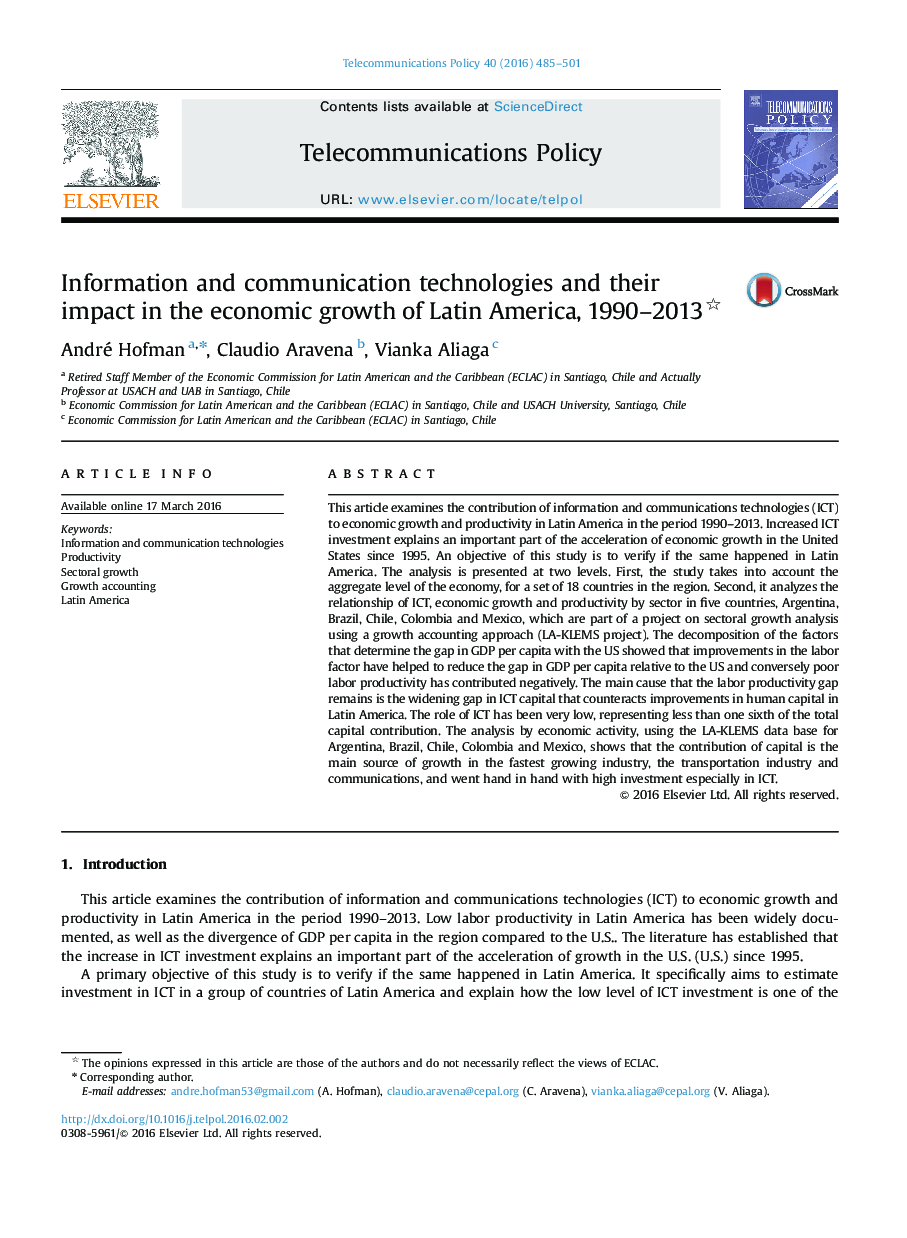| Article ID | Journal | Published Year | Pages | File Type |
|---|---|---|---|---|
| 556538 | Telecommunications Policy | 2016 | 17 Pages |
This article examines the contribution of information and communications technologies (ICT) to economic growth and productivity in Latin America in the period 1990–2013. Increased ICT investment explains an important part of the acceleration of economic growth in the United States since 1995. An objective of this study is to verify if the same happened in Latin America. The analysis is presented at two levels. First, the study takes into account the aggregate level of the economy, for a set of 18 countries in the region. Second, it analyzes the relationship of ICT, economic growth and productivity by sector in five countries, Argentina, Brazil, Chile, Colombia and Mexico, which are part of a project on sectoral growth analysis using a growth accounting approach (LA-KLEMS project). The decomposition of the factors that determine the gap in GDP per capita with the US showed that improvements in the labor factor have helped to reduce the gap in GDP per capita relative to the US and conversely poor labor productivity has contributed negatively. The main cause that the labor productivity gap remains is the widening gap in ICT capital that counteracts improvements in human capital in Latin America. The role of ICT has been very low, representing less than one sixth of the total capital contribution. The analysis by economic activity, using the LA-KLEMS data base for Argentina, Brazil, Chile, Colombia and Mexico, shows that the contribution of capital is the main source of growth in the fastest growing industry, the transportation industry and communications, and went hand in hand with high investment especially in ICT.
